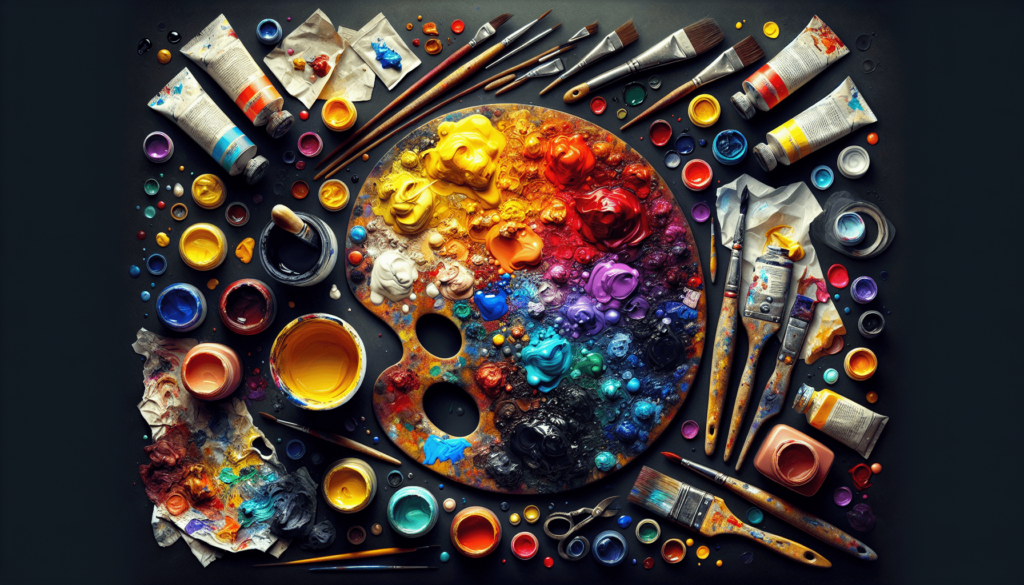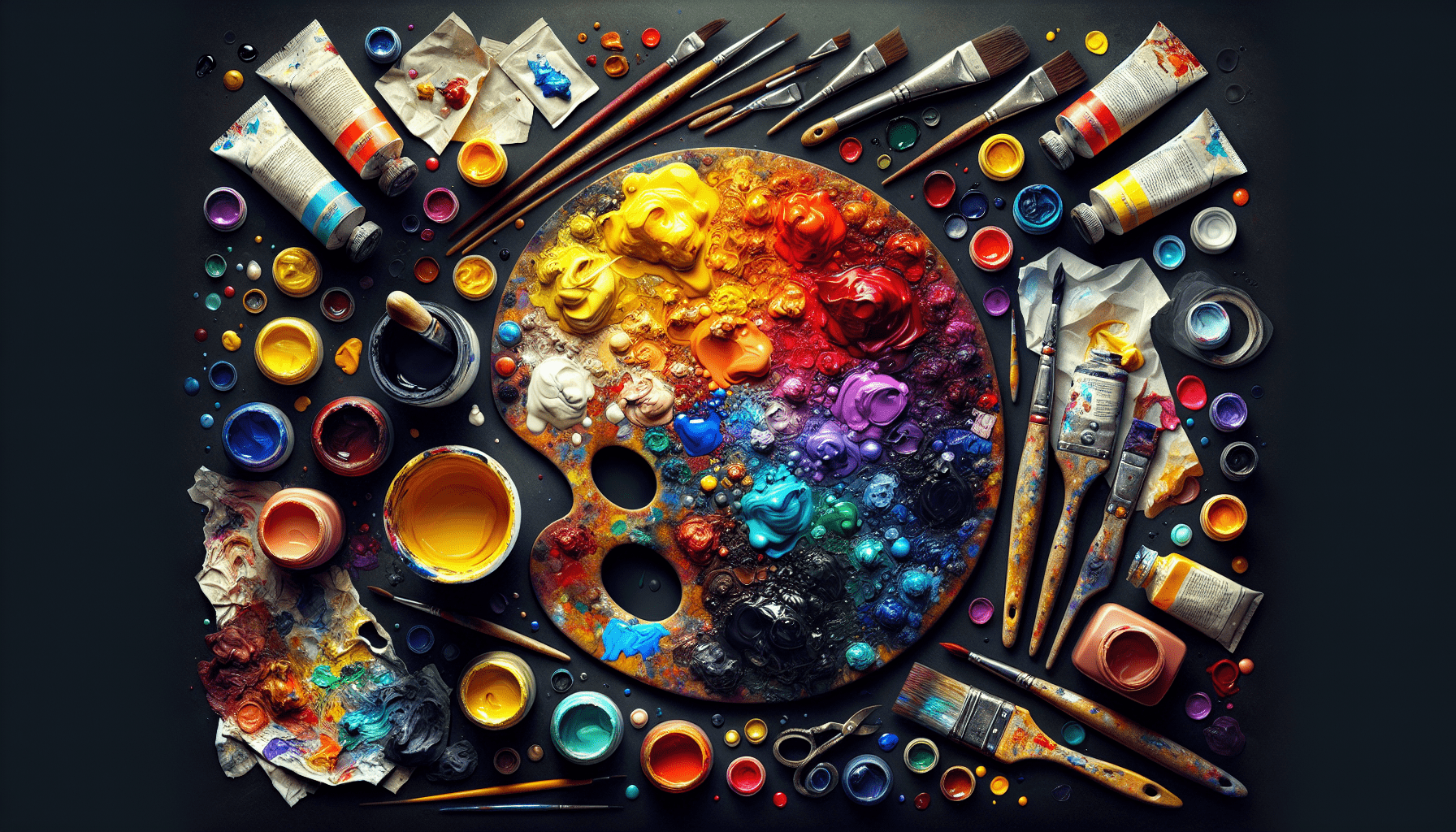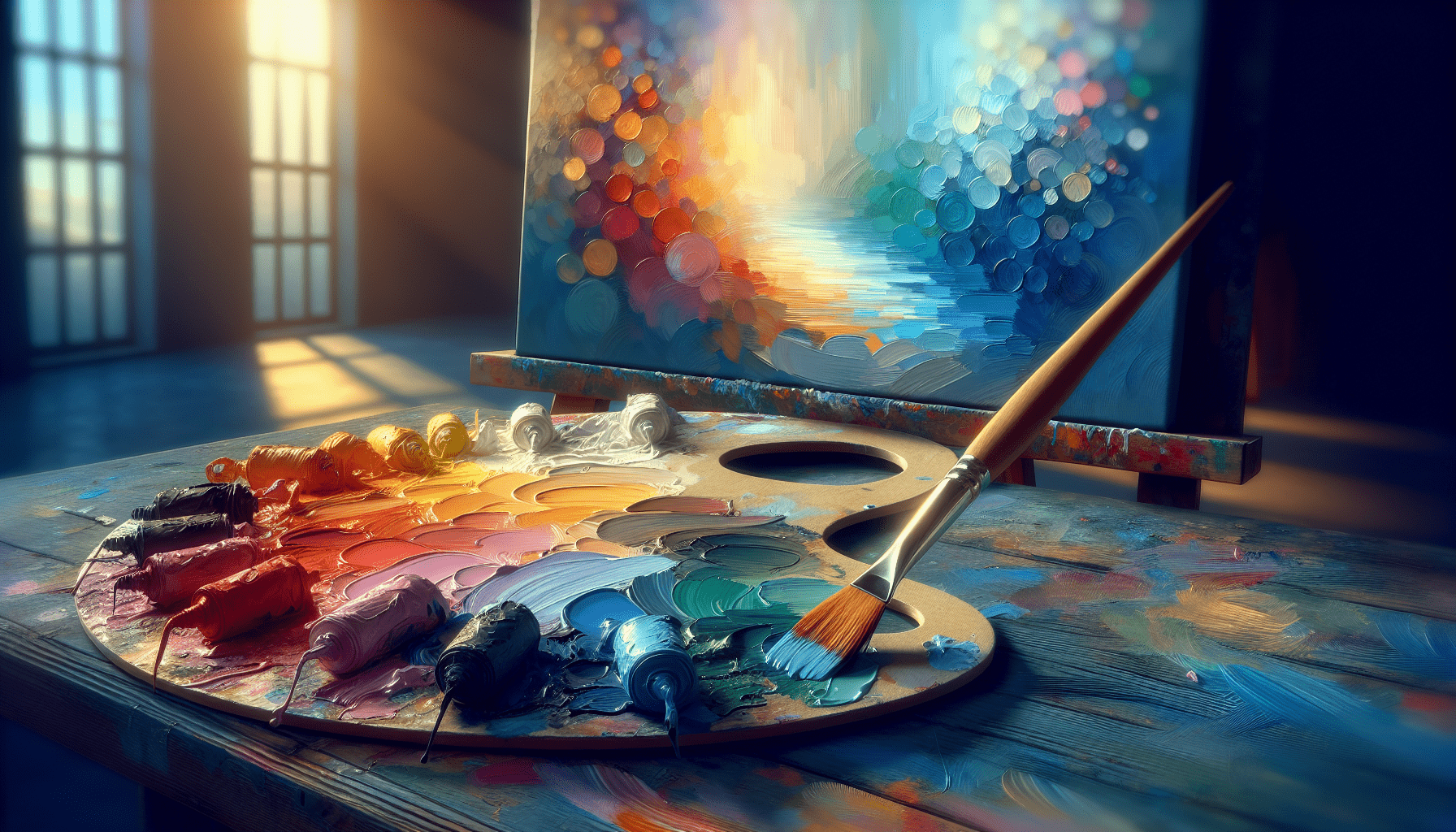Have you ever wondered how to make your poster paint at home? Crafting your own poster paint can be an exhilarating and rewarding experience, allowing you to tailor the colors and textures exactly to your liking. This process is not only cost-effective but also provides an understanding of the ingredients involved, ensuring you can create a product that meets your specific needs.

Understanding Poster Paint
Before delving into the specifics of making your own poster paint, it’s important to understand what poster paint is and what makes it unique. Unlike other types of paint, poster paint is water-based and typically used for educational and decorative purposes, such as school projects or posters for public announcements.
Composition of Poster Paint
Poster paint primarily consists of three main components:
- Pigment: This provides the color of the paint.
- Binder: This ensures the pigment adheres to the paper.
- Solvent: This helps to control the consistency and application of the paint.
Below is a simple table outlining common materials used for each component:
| Component | Common Materials |
|---|---|
| Pigment | Food coloring, watercolor pigments, powdered tempera |
| Binder | Glue, starch, flour |
| Solvent | Water |
Benefits of Making Your Own Poster Paint
By making your own poster paint, you can gain numerous benefits, such as:
- Customization: Tailor the colors and consistency to your exact needs.
- Cost Efficiency: Utilize inexpensive materials available in your home.
- Safety: Control the ingredients to ensure no harmful chemicals.
Ingredients and Tools
To get started on making your own poster paint, you need certain basic ingredients and tools. Ensuring you have everything prepared beforehand will streamline the process.
Required Materials
| Material | Purpose |
|---|---|
| Cornstarch or Flour | Acts as a binder |
| Water | Serves as a solvent |
| Food Coloring or Natural Pigments | Provides color |
| White Glue | Enhances adhesion |
| Containers | For mixing and storing the paint |
| Mixing Sticks | For stirring the mixture |
Optional Additives
To further improve your paint’s durability or give it special properties, consider the following additives:
- Glycerin: Adds smoothness to the paint.
- Salt: Acts as a preservative.
- Vinegar: Helps to prevent mold growth.
Steps to Make Poster Paint
Creating your own poster paint involves several straightforward steps. Let’s break down the process to ensure success.
Step 1: Prepare the Binder
First, prepare your binder. This could be a simple mix of cornstarch or flour with water. Using cornstarch will create a smoother texture, while flour results in a more opaque finish.
- Mix Cornstarch/Flour with Water: Combine 1 cup of cornstarch or flour with 1 cup of water in a container. Stir continuously to ensure there are no lumps.
Step 2: Add Adhesion Properties
For better adhesive qualities, introduce white glue into the mixture.
- Integrate Glue: Add two tablespoons of white glue to the mixture while stirring continuously.
Step 3: Introduce Pigment
Now, it’s time to add color to your paint. Choose your preferred pigment based on the desired look and feel.
- Select Pigment: Decide between food coloring, natural pigments, or powdered tempera.
- Add Pigment: Introduce a few drops of food coloring or a small amount of powdered pigment into the mixture. Stir continuously until the color is uniformly distributed.
Step 4: Adjust Consistency
You can adjust the paint’s consistency according to your preference. If the paint is too thick, add water, half a teaspoon at a time. If it’s too thin, add more cornstarch or flour.
- Achieve Desired Consistency: Test the paint by applying it on a paper surface. Adjust the mixture until you achieve a smooth, consistent application.
Step 5: Optional Additives
If you opted for any additives, mix them in at this stage to enhance the paint’s properties.
- Mix Additives: Introduce a few drops of glycerin for smoothness, a pinch of salt for preservation, or a few drops of vinegar to prevent mold.
Step 6: Storage
Store the paint in airtight containers to prolong its shelf life.
- Store Properly: Use resealable jars or bottles. Label the containers with the date and color of the paint for easy identification.
Tips for Enhancing Your Poster Paint
Creating poster paint is a versatile and flexible process. Here are a few tips to ensure you achieve the best results:
Quality of Pigments
The quality of the pigment will greatly affect the final color of your poster paint. Using high-quality pigments, such as artist-grade food coloring or natural dyes, will give a richer and more vibrant result.
Experiment with Textures
Poster paint doesn’t have to be smooth. By experimenting with different binders, you can achieve various textures. For instance, using flour will make the paint more opaque and textured, whereas cornstarch will give a satin finish.
Test on Different Surfaces
Poster paint isn’t limited to just paper. You can test it on cardboard, fabric, or wood. Each surface will give you a different outcome, and experimenting can broaden your understanding of how versatile your paint can be.
Adjusting Drying Time
If you want your paint to dry quickly, use less water. Conversely, if you need it to remain workable for a longer period, consider adding more water or glycerin.

Troubleshooting Common Issues
When making poster paint, you might encounter some common issues. Here are a few troubleshooting solutions to ensure a smooth process:
Lumpy Texture
If your paint ends up lumpy, it could be due to improper mixing of the binder.
- Solution: Ensure you dissolve the cornstarch or flour completely in water before adding it to the mixture. Use a whisk or a blender for thorough mixing.
Inadequate Adhesion
The paint may not stick well to the paper.
- Solution: Increase the amount of white glue in the mixture.
Fading Colors
Your paint may lose its vibrancy once it dries.
- Solution: Use more concentrated pigments or artist-grade food coloring to ensure the colors remain bright after drying.
Safety Considerations
When making your own poster paint, it’s essential to adhere to certain safety guidelines to protect yourself and others, especially if children are involved in the process.
Non-Toxic Ingredients
Opt for non-toxic ingredients, especially if kids will be using the paint. Common kitchen ingredients like cornstarch, water, and food coloring are safe and widely available.
Supervision
If children are involved in making or using the paint, ensure they are supervised at all times to prevent ingestion of materials or accidents during the mixing process.
Storage and Shelf Life
Store the paint in airtight containers away from direct sunlight to increase its longevity. Homemade poster paint typically lasts 3-4 weeks but can degrade faster if preservatives aren’t used.
Applications of Homemade Poster Paint
Creating your poster paint opens up endless possibilities in terms of its applications. Here are a few creative ideas:
Educational Use
Children can use homemade poster paint for various school projects, art classes, and science fair posters. The process of making the paint can also serve as a fun and educational activity itself.
Decorative Projects
Homemade poster paint can be used for decorating rooms, creating banners for events, and personal art projects. The flexibility of making different colors and textures can enhance the creativity and personal touch in your projects.
Community Initiatives
Poster paint is often used for community activities such as making posters for local events, charity drives, or campaigns. Making your own paint can reduce costs significantly, allowing more funds to be channeled towards the cause at hand.
Conclusion
Crafting your own poster paint not only offers a cost-effective and customizable alternative to store-bought options but also presents an opportunity to engage in a rewarding creative process. Understanding the components, gathering the right materials, and following a step-by-step guide ensures you can produce high-quality paint tailored to your specific needs. Experiment with pigments and binders, and don’t hesitate to incorporate optional additives to tweak the texture, consistency, and shelf life of your paint. By adhering to safety guidelines and troubleshooting common issues, you can create a versatile paint suitable for various applications—from educational projects to community events. Enjoy the satisfaction of creating something uniquely yours, and marvel at the endless possibilities your homemade poster paint can bring to your artistic endeavors.



